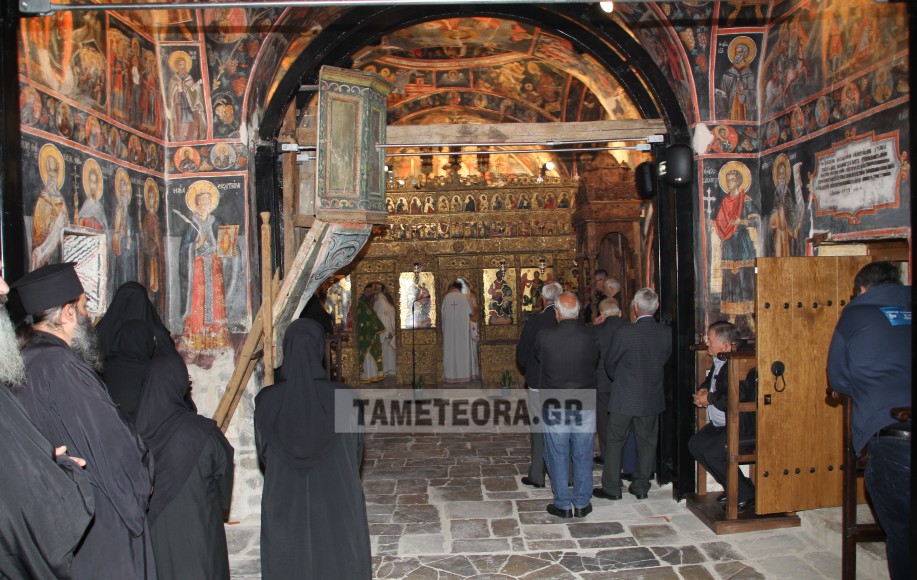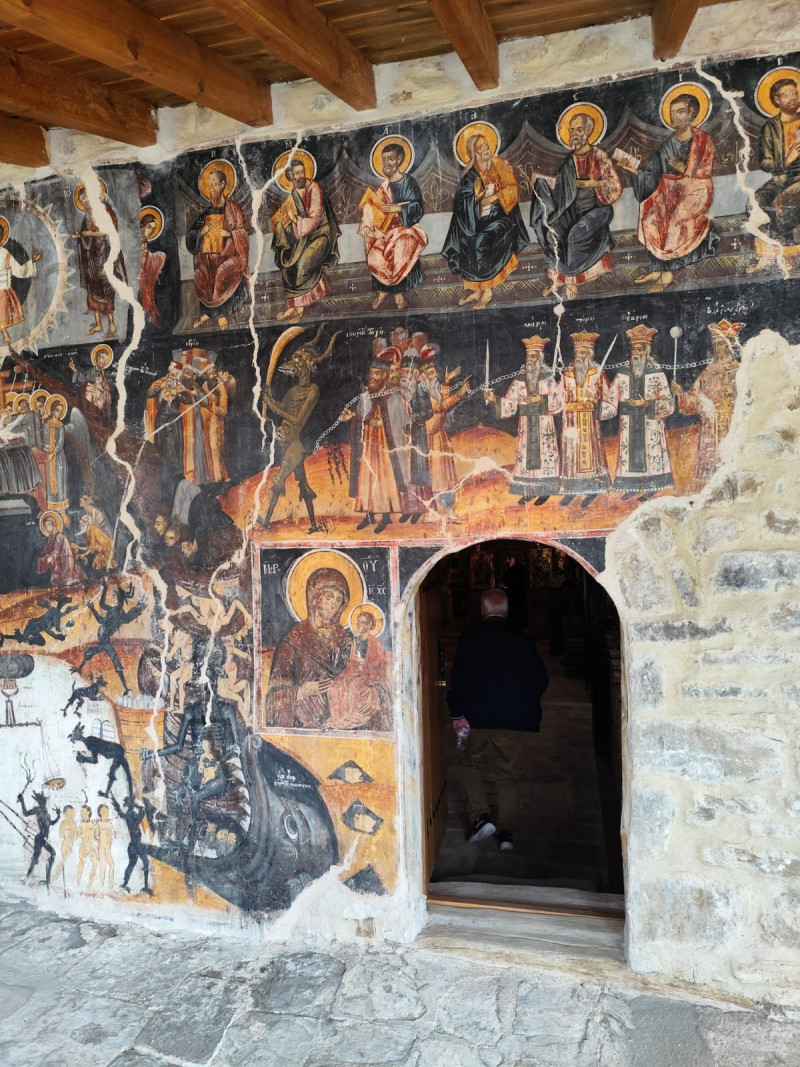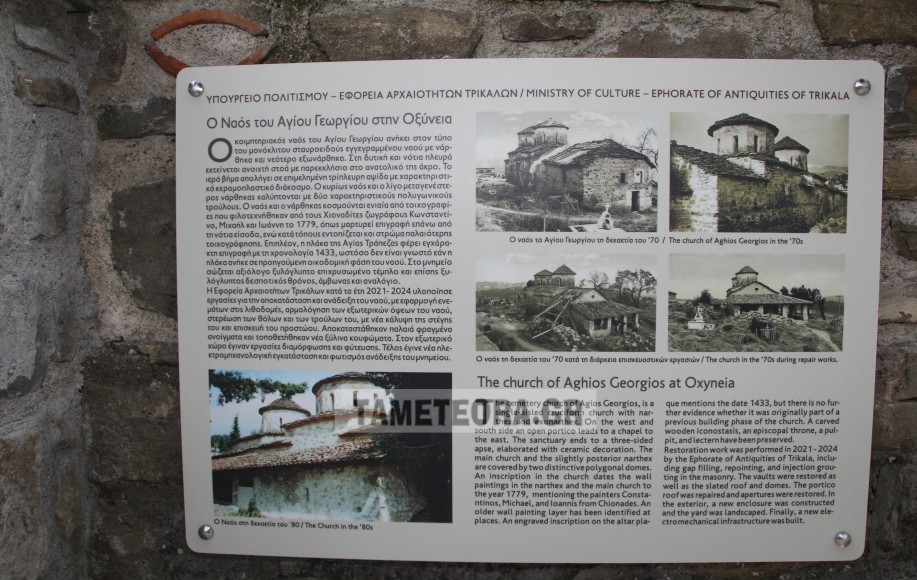The inauguration of the restored historical Church of St. George in the Oxia Church of the Municipality of Meteora, in the presence of the Minister of Culture Lina Mendoni, the Metropolitan of Stagnos and the Metropolitan of the Metropolitan and Meteoros, were held with great splendor.
“This chapel, which was ruined, today, stands again alive and performs its purpose, the worship of God,” the Minister of Culture said.
The church of Agios Georgios is located at the entrance of the Local Oxia Community of the Municipality of Meteora, in the Regional Unit of Trikala. The chapel with the famous frescoes of the Chionadian painters dates back to 1779 and in 2000, was officially recognized as a historical preserved monument.
The temple is stone -built, elongated, and consists of two consecutive single -storey parts with domes, while on the west side there is arched narthex.
His frescoes, the work of the Chionadian hagiographers, are preserved in excellent condition and exude the deep religiosity and artistic value of the 18th century.
Who were the famous Hagiographers of the Snowmen
The village of Chionades in Konitsa province was famous for its hagiographers. Mostly in the 18th and 19th centuries, even in the early 20th century, the hagiographers of the village traveled to all the Balkans and left very appreciated works in temples and houses.
What impresses their works is the impact of European Baroque and Rococo on the decoration of houses and churches, as well as their adaptability to the currents and rhythms.
According to diakonima.gr, snowy painters wandered around the villages of the area but also in the farthest parts of Epirus, reaching up to Northern Epirus, Macedonia, Mount Athos, Thessaly and neighboring countries
Snowy painting has been performed over a period of two and a half centuries, so it does not have a single style but follows the aesthetic patterns of the time. The earlier works are subject to the late phase of post -Byzantine art. The 19th century is dominated by the populist painting and towards the end of the century and the beginning of the 20th the western painting.
Painting in the older temples was done by the method of frescoes, that is, painting on a freshly dyed wall with colors of natural origin. Painting portable icons in wood was done in the same colors but with the addition of egg as a binder. The newer frescoes and portable icons used the technique of oil painting.
What work did I do in the chapel of St. George
The work performed at the monument included the restoration of the exterior of the temple, the application of joints and grips, the maintenance of the roof with slabs, the replacement of worn wooden elements and frames, as well as the restoration of the actor.
Particular attention was given to the maintenance of the frescoes and the wood -carved elements of the temple.
At the same time, new electromechanical systems (electricity, heating, fire protection) were installed, and extensive work was carried out in the surrounding area, including cuttings, planting and the construction of retaining walls.
Particular care was given to accessibility for people with disabilities, with ramps, informational marking and braille signs.
Source :Skai
I am Frederick Tuttle, who works in 247 News Agency as an author and mostly cover entertainment news. I have worked in this industry for 10 years and have gained a lot of experience. I am a very hard worker and always strive to get the best out of my work. I am also very passionate about my work and always try to keep up with the latest news and trends.













